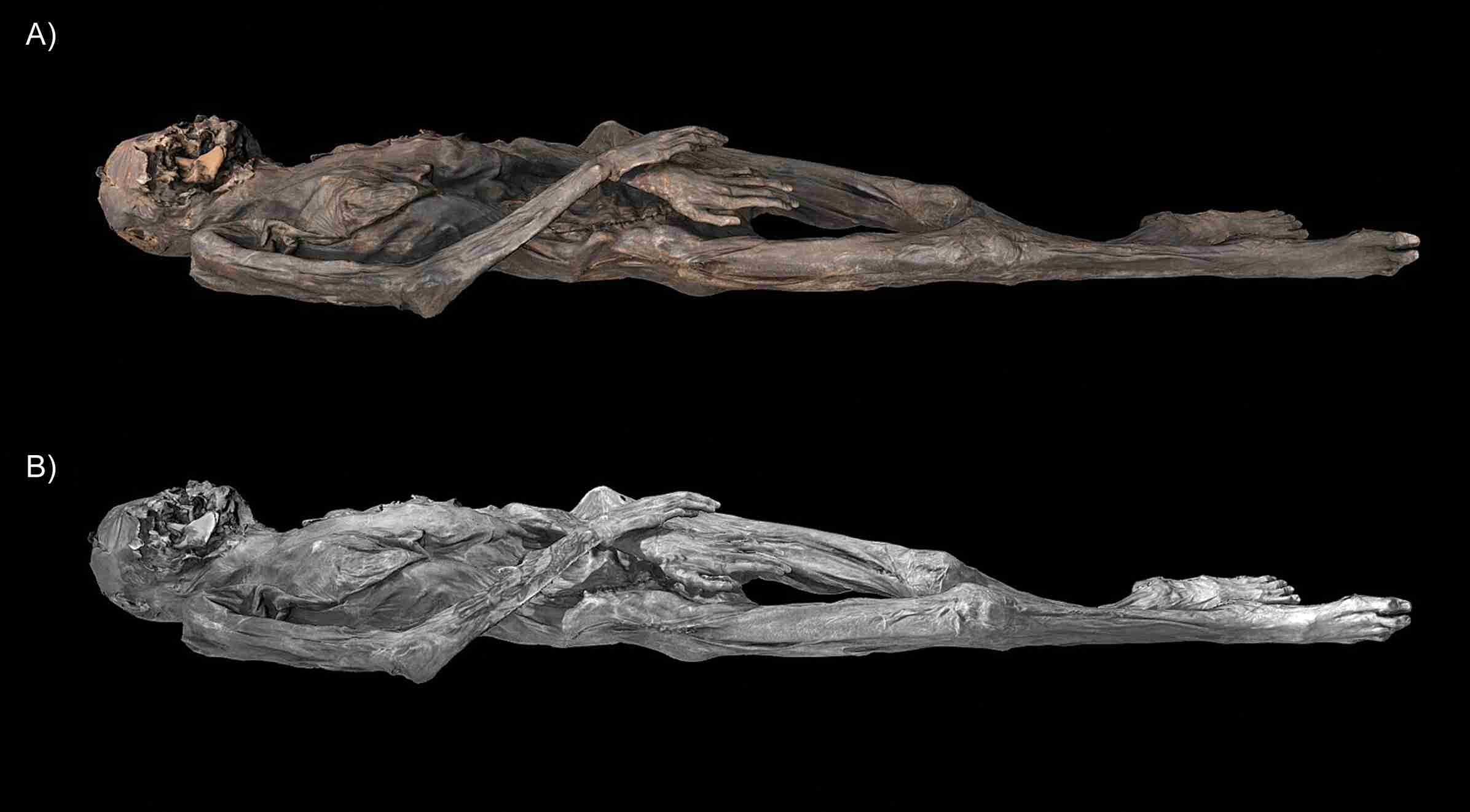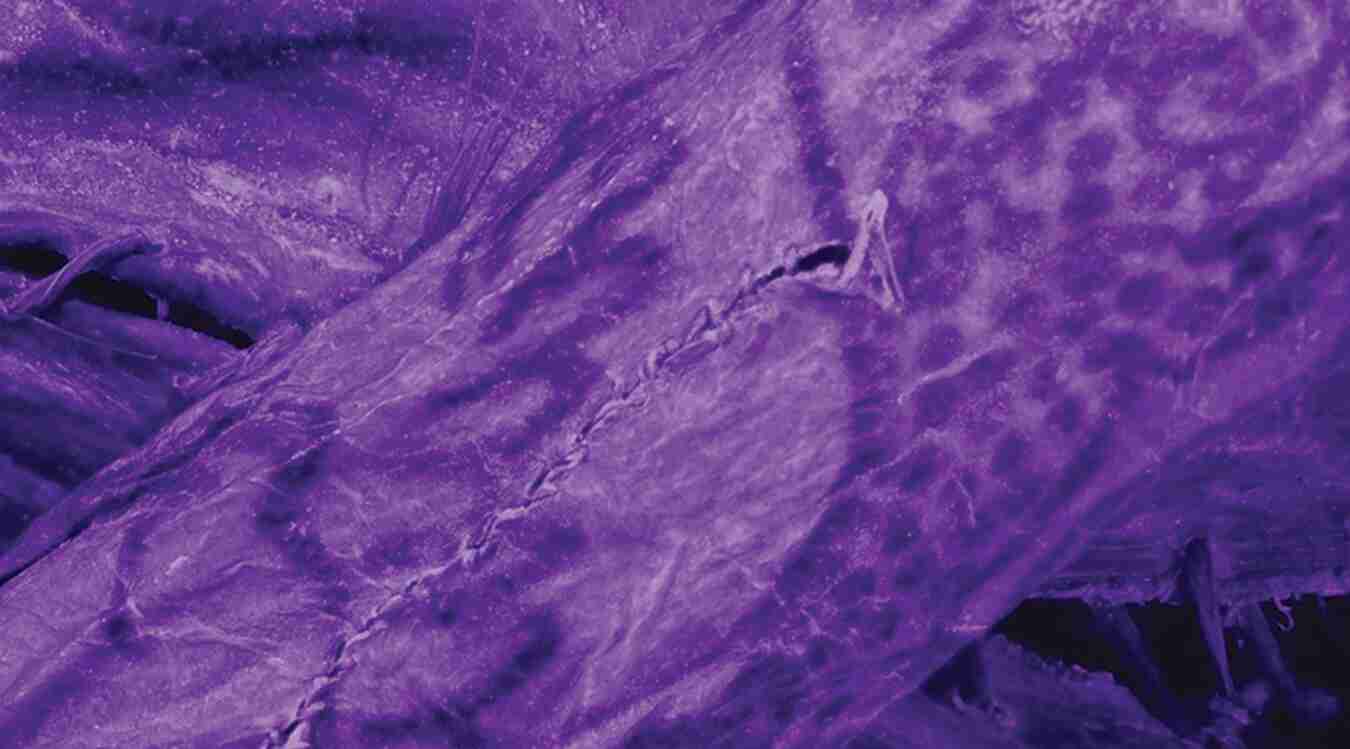
A team of archaeologists has digitally reconstructed tattoos from a 2,500-year-old mummy discovered in Siberia’s Altai Mountains, shedding new light on Iron Age body art and the skill of ancient tattooists.
The study, published in the journal Antiquity and led by Gino Caspari of Germany’s Max Planck Institute of Geoanthropology, used high-resolution near-infrared imaging to reveal details previously hidden from view.
The mummy belongs to the Pazyryk culture, a nomadic people who lived across the Eurasian steppe during the Early Iron Age.
These groups, often described under the broader “Scythian world,” are known for elaborate animal-style art and complex burial rites. The new analysis focuses on a female buried in Pazyryk tomb 5, whose preserved skin carries some of the most intricate tattoos found in the region.
Digital imaging reveals hidden details
Researchers captured three-dimensional images of the mummy using modified cameras and digital photogrammetry.
The technique allowed them to see beneath the skin’s surface and detect faded pigments invisible to the naked eye. The resulting digital model reveals detailed patterns, including animals such as deer and tigers, rendered with varying levels of skill.
The study found clear differences between the tattoos on the mummy’s left and right forearms. The right arm features complex designs with fine lines, perspective, and intentional placement—likely the work of an experienced tattoo artist.
In contrast, the left arm displays simpler figures with less anatomical accuracy, suggesting either a novice artist or that the tattoos were drawn during a different stage of life.
Tools and techniques of ancient tattooists
High-resolution imagery also helped identify the tools and techniques used. Most lines appear to have been created with multi-point tools that delivered pigment evenly beneath the skin, while finer details may have required single-point implements.
The analysis found no evidence of subdermal or incision-based methods, pointing instead to puncture techniques similar to hand-poking practices still used in some cultures.

The findings highlight a high degree of craft specialization among Pazyryk tattooists. Some tattoos seem to have been applied in multiple sessions, reflecting careful planning and design rather than random decoration.
This structured approach reveals not only artistic skill but also cultural significance, with tattoos likely playing important roles in personal identity and social status during life.
Cultural significance and burial practices
The Pazyryk culture’s frozen tombs, preserved by permafrost, have yielded some of the best evidence for ancient tattooing worldwide.
Excavated first in the 1940s and later revisited by international teams, these burials contain mummified individuals along with wooden, leather, and textile artifacts. Climate change now threatens these rare sites, as thawing ice accelerates the decay of organic material.
Beyond reconstructing patterns, the study also considers the meaning of tattoos in burial contexts. Postmortem cuts across the forearm tattoos suggest that their symbolic or spiritual function ended with death.
Unlike some cultures, where tattoos were thought essential for passage into the afterlife, Pazyryk markings appear rooted in the world of the living.
A new window into Iron Age artistry
The digital reconstructions, now publicly available online, provide archaeologists with unprecedented data for studying Iron Age body art.
By comparing these images with experimental tattoos made using reconstructed ancient tools, researchers can distinguish individual artists’ hands and refine their understanding of prehistoric techniques.
Caspari’s team believes this approach marks a turning point in the study of ancient tattooing. These high-resolution images allow us to see details that drawings or older photographs missed, the researchers noted in the paper.
The ability to differentiate tools, methods, and even artistic styles may help future studies trace cultural exchanges and craft traditions across the vast Eurasian steppe.


